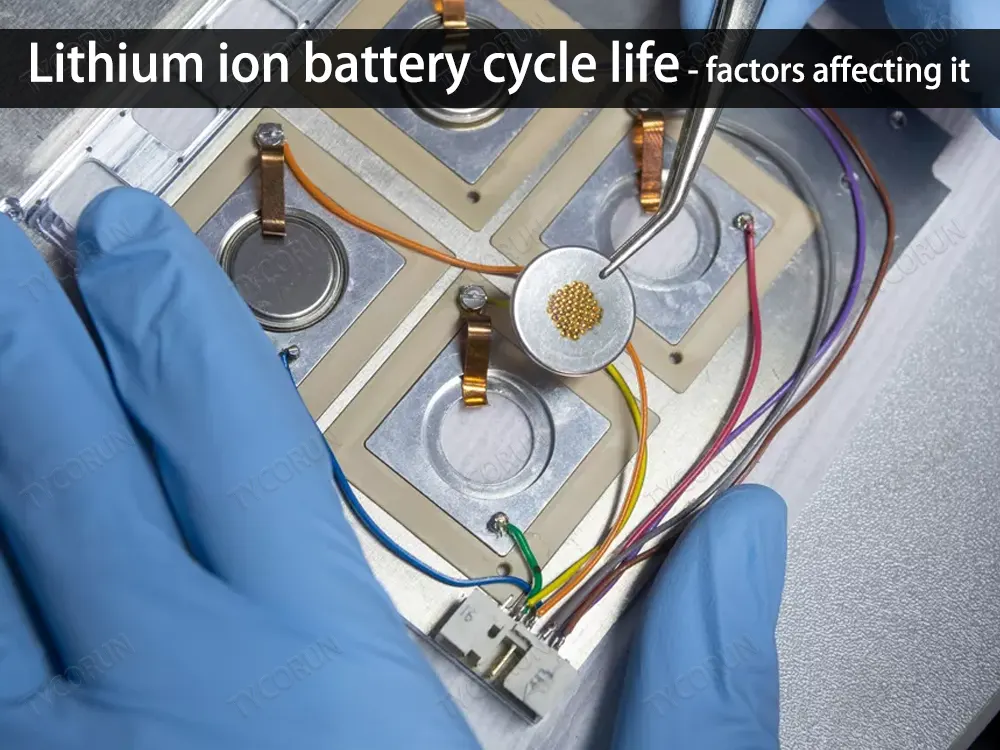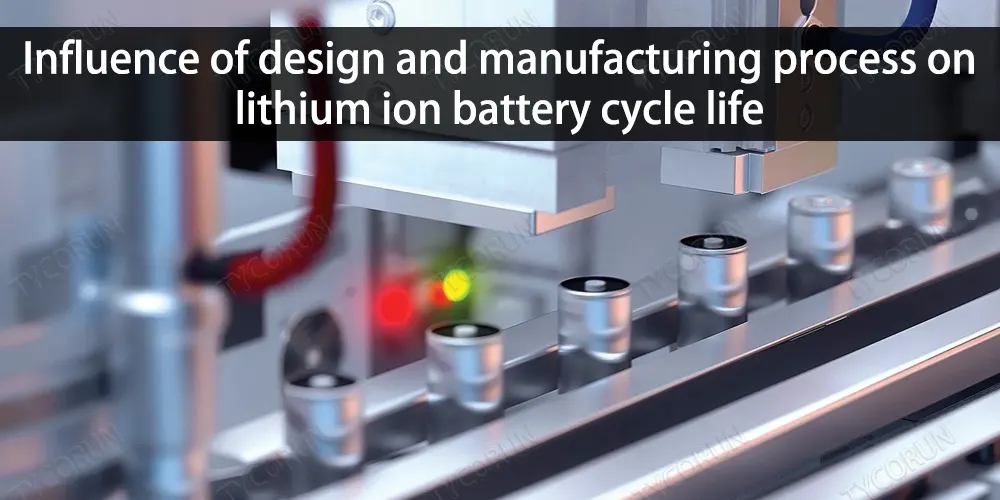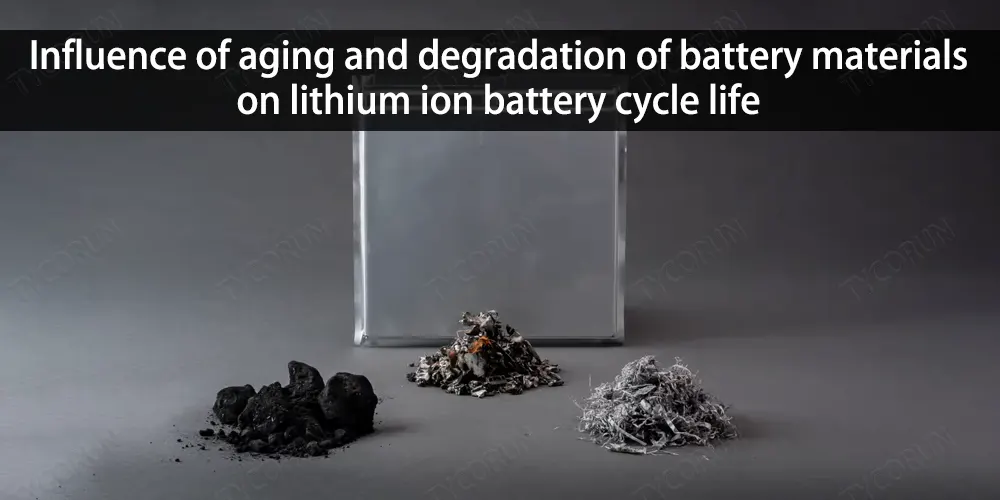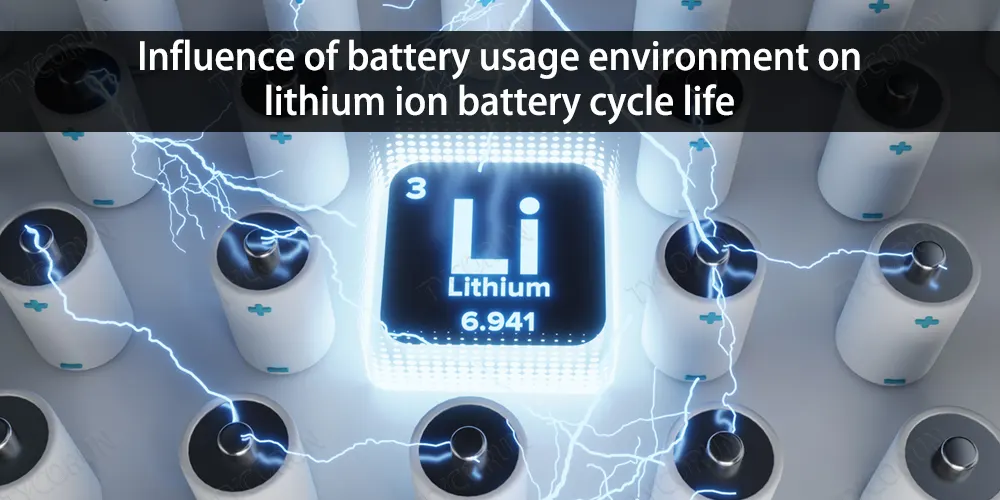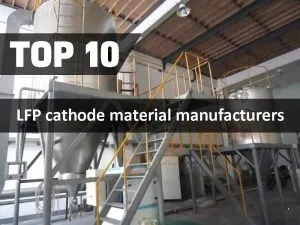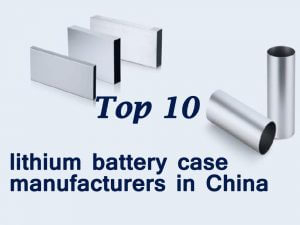Home » lithium ion battery knowledge » Lithium ion battery cycle life – factors affecting it
Lithium ion battery cycle life - factors affecting it
With the development of science and technology and the maturity of technology, the application of lithium ion batteries is becoming more and more extensive. lithium ion batteries have the advantages of high cell voltage, light weight, and environmental friendliness.
However, after multiple cycles of charging and discharging, performance such as battery capacity will decline. Under the same conditions, the faster the battery capacity decays, the poorer the battery quality will be.
The charge-discharge cycle process of lithium ion batteries is a complex physical and chemical reaction process, and there are many factors that affect the lithium ion battery cycle life, which will be discussed in this article.

Lithium ion battery structure and principle
Lithium ion batteries are mainly composed of cathode and anode materials, electrolyte, separator, current collector and battery shell. The cathode and anode materials are composed of two different lithium ion intercalation compounds. For further information, we also listed the top 10 anode material manufacturers.
When charging, lithium ions are deintercalated from the cathode and inserted into the anode through the separator, and the opposite is true when discharging. During the first charge and discharge process of the lithium ion battery, a passivation film can be formed on the phase interface between the anode and the electrolyte.
It acts as a separator between the electrode and the electrolyte. It is an electronic insulator but an excellent conductor of lithium ions. Lithium ions can be freely inserted and extracted through the passivation layer. It has the characteristics of a solid electrolyte, so this passivation film is called “solid electrolyte interface film”, or SEI film for short.
Influence of design and manufacturing process on lithium ion battery cycle life
Material properties
Material selection is the most important factor in the battery design process. Different materials have different performance characteristics, and the performance of the developed batteries also differ. Only if the cycle performance of the matching cathode and anode materials is good, will the lithium ion battery cycle life be long.
In terms of ingredients, pay attention to the amount of cathode and anode materials added. Generally speaking, in the process of design and assembly, it is generally required that the capacity of the anode should be more than that of the cathode.
If it is not excessive, lithium will be precipitated from the anode during the charging process, forming lithium dendrites, which will affect safety. If the anode is too much in excess of the cathode, the cathode may be delithiated excessively, causing the structure to collapse.
The properties of the cathode and anode current collectors also affect the capacity and cycle life of the battery. The commonly used current collector materials for the cathode and anode of lithium ion batteries are aluminum and copper, respectively, both of which are easily corroded metal materials.
The passivation film formed after the current collector is corroded, the poor adhesion, local corrosion (pitting corrosion) and general corrosion will all increase the internal resistance of the battery, resulting in capacity loss and lower discharge efficiency. Its adhesion and corrosion resistance can be enhanced by pretreatment methods such as acid-alkali etching and conductive coating.
Electrolyte
The electrolyte is also a very important factor in the influence of the reversible capacity of the battery. The process of removing and intercalating lithium ions from electrode materials is always a process of interaction with the electrolyte, and this interaction has an important impact on the interface conditions and internal structure changes of electrode materials.
The electrolyte will be lost during the interaction with the cathode and anode materials. In addition, when the battery is formed to form an SEI film and pre-charged, part of the electrolyte will also be consumed. Therefore, the type of electrolyte and the amount of liquid injected also affect the battery life.
Common electrolytes are composed of solvents, lithium salts and various additives. The process of removing and intercalating lithium ions from the cathode and anode materials always interacts with the electrolyte, and complex redox reactions will occur on the interface due to this interaction, and even gas or solid products will be generated, thereby depleting the electrolyte.
The gas will increase the internal pressure of the battery and cause the battery to deform, and the solid product will form a passivation film on the surface of the electrode, which will cause the polarization of the battery to increase and reduce the output voltage of the battery.
These factors will have a negative impact on battery capacity and safety, and ultimately affect the cycle life of the battery. Adding additives can effectively improve the cycle performance of lithium ion batteries, such as adding a small amount of additive anisole to the EC/DEC solvent system.
Manufacturing process
The manufacturing process of lithium ion batteries mainly includes: cathode and anode ingredients, coating, sheet production, winding, shelling, liquid injection, sealing, chemical formation, etc. In the battery production process, the requirements for each step of the process are very strict. Any process that is not well controlled may affect the lithium ion battery cycle life performance.
During the batching process of cathode and anode, attention should be paid to the amount of binder added, stirring speed, concentration of slurry, temperature and humidity, and to ensure that the materials can be dispersed evenly.
In the coating process, under the premise of ensuring high specific energy of the battery, reasonably controlling the coating amount of the cathode or anode, and appropriately reducing the thickness of the electrode will help reduce the battery decay rate. The coated pole piece needs to be further compacted with a roller press.
Appropriate positive compaction density can increase the discharge capacity of the battery, reduce internal resistance, reduce polarization loss, and prolong the lithium ion battery cycle life.
When winding, the rolled battery core should be tight. The tighter the separator and the electrodes are rolled, the smaller the internal resistance, but if the roll is too tight, it will cause difficulty in wetting the pole piece and the separator, resulting in a smaller discharge capacity.
If the roll is too loose, the pole piece will excessively expand during the charging and discharging process, increase the internal resistance, reduce the capacity, and shorten the lithium ion battery cycle life.
Influence of aging and degradation of battery materials on lithium ion battery cycle life
The process of charging and discharging a lithium ion battery is the process in which lithium ions move back and forth between the cathode and anode materials through the electrolyte. During the cycle of lithium ion batteries, in addition to redox reactions at the cathode and anodes, there are also a large number of side reactions.
If the side reactions of lithium ion batteries can be reduced to a low level, so that lithium ions can always go back and forth smoothly between the cathode and anode materials through the electrolyte, the lithium ion battery cycle life can be increased.
The movement of lithium ions from the cathode to the anode must pass through the SEI film covering the carbon anode. The quality of the SEI film directly affects the cycle life of the battery.
The stability of the SEI film has an important impact on the stability of the battery. The SEI film is unstable and easy to precipitate lithium metal, which will lead to rapid degradation of the anode active material. A lithium battery with a stable SEI film can be stored at high temperature for more than 4 years.
The researchers studied the aluminum-plastic film lithium ion battery that underwent 200 charge-discharge cycles, and the results showed that the discharge capacity of the battery gradually decreased, and the internal resistance and thickness gradually increased.
After dismantling the batteries with different cycles, the experimental observations showed that after 200 cycles, many cracks appeared on the surface of the cathode, and the average particle size decreased. The anode showed that the SEI film became thicker, and lithium and lithium compounds precipitated at the end of the cycle.
Professionals have conducted an in-depth analysis of the aging mechanism of the internal materials of the battery with charge and discharge cycles, and reviewed the factors such as the stability of the crystal structure of the electrode material, the interface side reactions between the active material and the electrolyte, and the decline in the performance of the binder. Power performance is affected, and the reasons and effects of cathode and anode aging are summarized.
For the anode material, in addition to the factors that increase the impedance due to the poor contact between the anode components due to the formation and growth of the SEI film, the main factors are: the solvent is embedded in the C electrode to generate gas, which leads to the rupture of C particles, and the volume change in the cycle.
The contact between the active material particles will become worse, and the precipitated lithium metal will react with the electrolyte to accelerate aging.
Influence of battery usage environment on lithium ion battery cycle life
The use environment of lithium ion batteries is also very important to lithium ion battery cycle life, especially the ambient temperature. Both too low or too high ambient temperature will affect the lithium ion battery cycle life. The constant voltage charging time at low temperature increases, and the charging performance also deteriorates significantly.
The main reasons for the reduction of discharge capacity of lithium ion batteries at low temperatures include: poor electrolyte conductivity, poor wetting or permeability of the separator, slow migration of lithium ions through the electrode/electrolyte interface, etc. In addition, the resistance of the SEI film increases at low temperatures, slowing the passage of lithium ions through the electrode/electrolyte interface.
The reason for the increase in the impedance of the SEI film is that it is easier for lithium ions to escape from the anode at low temperature, but it is more difficult to intercalate. When charging, metal lithium will appear and react with the electrolyte, forming a new SEI film to cover the original SEI film, increasing the impedance of the battery and resulting in a decrease in the capacity of the battery.
The researchers conducted 300 charge-discharge cycle experiments on the same batch of lithium batteries at 60°C and normal temperature. In the initial stage, the battery exhibited a higher discharge capacity at 60°C. However, as the cycle progresses, the battery capacity decays faster, the cycle stability decreases, and the battery even bulges in the later stage.
The charge-discharge cycle of lithium ion batteries is unstable at high temperatures. High temperatures lead to intensified electrochemical polarization of the electrodes of the battery and the generation of gas, resulting in bulging. At the same time, the charge transfer resistance increases and the kinetic performance of ion transfer decreases.
In addition, devices using lithium ion batteries may be subjected to conditions such as vibration, shock, and collision during transportation or normal operation. Some lithium batteries charge and discharge while communicating with the system and receive data information according to a certain frequency.
The frequency when the device vibrates may interfere with the battery frequency, causing chip data errors or triggering protection circuit actions. Under strong vibration or impact, the tabs, external connections, terminals, solder joints, etc. of the lithium ion battery may break or fall off, and the active material on the battery pole piece may also peel off, which will affect the lithium ion battery cycle life and even cause severe damage.
Influence of charging and discharging regimes on lithium ion battery cycle life
The use process of lithium ion batteries, one of the best rechargeable batteries, is the process of charge-discharge cycle. The charge-discharge current, the choice of charge-discharge cut-off voltage, and the charge-discharge method used all have a very important impact on the lithium ion battery cycle life.
Blindly increasing the working current of the battery, increasing the charge cut-off voltage, or reducing the discharge cut-off voltage will all degrade the performance of the battery.
lithium ion batteries with different electrochemical systems have different charge-discharge cut-off voltages. In the charging process of lithium ion batteries, overcharging is considered to have occurred if the charging cut-off voltage is exceeded.
When the lithium ion battery is overcharged, the excess lithium ions extracted from the cathode will be deposited or embedded in the anode, and the deposited active lithium will easily react with the solvent, releasing heat to increase the temperature of the battery. The cathode is heated and decomposed to release oxygen, which makes the electrolyte easy to decompose and generate a lot of heat.
When the discharge voltage of the lithium battery is lower than the discharge cut-off voltage, over-discharge is formed. In the process of over-discharge, lithium ions will be excessively extracted from the anode, and it will be difficult to insert them again when charging next time.
Summary
Whether in design, manufacture or use, there are many factors that affect the lithium ion battery cycle life. The application of lithium ion batteries is becoming more and more extensive, and the demand for lithium batteries puts forward higher requirements in terms of quantity and quality.
The lithium ion battery cycle life directly affects the service time and quality of lithium ion batteries, so it is necessary for manufacturers to study its influencing factors.
Only by grasping all the factors affecting the lithium ion battery cycle life in the process of R&D and production, can custom lithium battery manufacturers take the initiative in the fierce market competition. Consumers should pay attention to the safety of lithium ion batteries during use, and use the batteries correctly according to the instructions in the manual.

